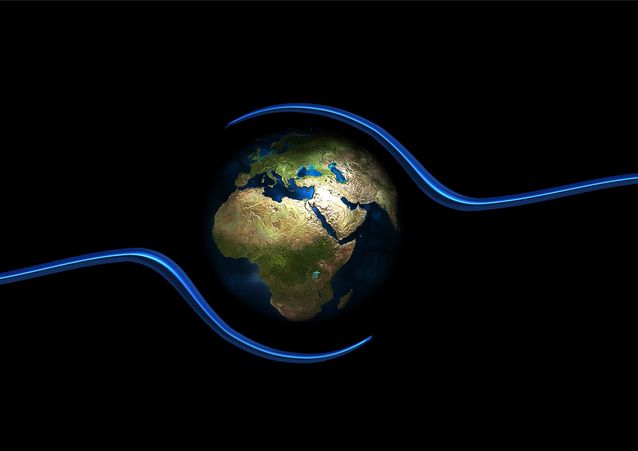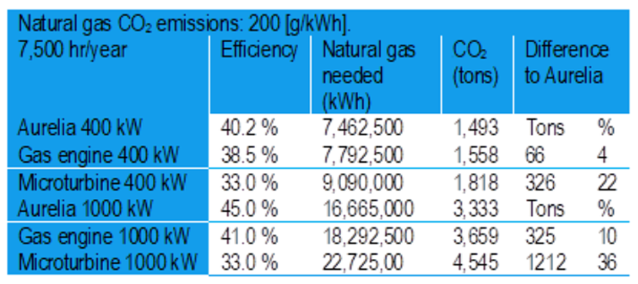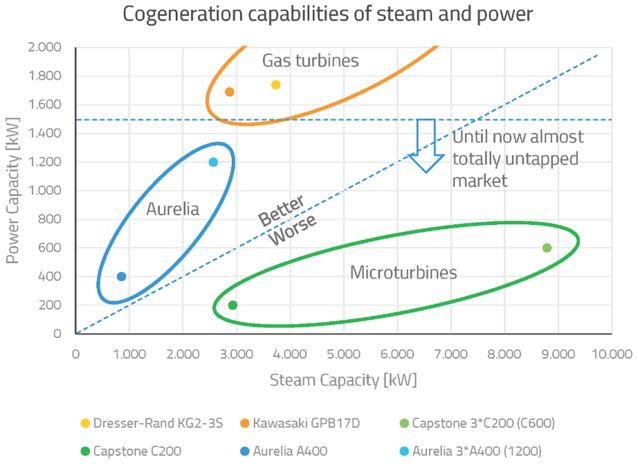
A few weeks ago, scientists reported a massive insect loss in Puerto Rico [1]. On the island, there is the famous El Yunque National Forest, the only rain forest of the greater Caribbean region. In the 1970s, researchers placed sticky traps in El Yunque on the ground and in the forest canopy. Researchers could pass nets hundreds of times. Then they measured the weights of the dry captured biomass to estimate the size of the population of bees and birds, insects, caterpillars, spiders and other arthropods in the forest.
Researchers returned to the same forest a few years ago and conducted the same catches. They found a dramatic change. The dry weight biomass of arthropods captured in sweep samples had declined 4 to 8 times. In sticky traps, it had declined 30 to 60 times. Put simply, we have already lost a vast majority of living animals in this unique forest. Surely the situation is the same in many other isolated rain forests all over the world.
This is yet another proof of the climate change taking place. We feel the hot summers in Europe, but the most radical changes have already taken place in vulnerable areas like rain forests or arctic regions.

Big changes needed to limit the Global Warming to 1.5°C
The Intergovernmental Panel on Climate Change (IPCC) released in October "The Special Report on Global Warming of 1.5°C [2]. The message was clear. Limiting global warming to 1.5°C would require rapid, far-reaching and unprecedented changes in all aspects of society.
The report states that the industry sector is the largest end-use sector both in terms of final-energy demand and Greenhouse Gas (GHG) emissions. Its direct CO2 emissions currently account for about 25% of total energy-related and process CO2 emissions.
The report also lists five strategies as the industry sector’s mitigation measures: reductions in demand, energy efficiency, increased electrification of energy demand, reducing the carbon content of non-electric fuels and deploying innovative processes and application of carbon dioxide capture and storage (CCS).
We need technical development
At Aurelia Turbines, we want to contribute in slowing down climate change. That is one of the reasons for us to develop new technology for more efficient and environmentally friendly power generation. As the report states, “without major deployment of new sustainability-oriented low-carbon industrial processes, the 1.5°C overshoot target is difficult to achieve”.
We also think that it is economically viable to change to technology that helps reduce CO2 emissions. It is especially economically feasible to increase energy efficiency.
Aurelia turbines are efficient
The potential to drive further gains by improving energy efficiency is large - currently, 70% of global energy consumption is not even subject to mandatory efficiency standards targets [3].
Our turbines have been developed to be very efficient. That reduces the amount of fuel – of any kind – they consume. This makes the emissions remarkably lower than those of other turbines of the same size that are commercially available.
Compared to a typical microturbine that is commercially available, the CO2 emissions of the Aurelia® A400 turbine are 22% lower. If we compare the A400 to a gas engine, the emissions of the A400 are 4% lower.
Think how much less CO2 emissions that 22% could mean. The CO2 emissions of the energy sector in Germany in 2017 were 319 million tons [4]. If we could cut that by 22%, we would already get rid of 70 million tons of additional CO2 in our atmosphere.
If we compare Aurelia® A1000, the next 1000 kW product, to microturbines and engines, we see the CO2 emissions get relatively even lower because the turbine is even more efficient.

Waste heat is a huge resource
Electricity generation is often extremely wasteful. In the USA in 2013, almost 70% of energy is wasted when electricity was generated [5]. At the same time, the world in using most of its energy as heat. Only 18% of the total world energy was in the form of electricity [6].

Cogeneration, the generation of electricity and useful heat jointly, may help us to reduce CO2 emissions remarkably. In combined heat and power (CHP) production, we recover otherwise wasted thermal energy for heating. The report points out that “recovering and reusing this waste heat under economically and technically viable conditions benefits the overall energy system”.
We have lots of opportunities in small and medium-sized industries. The German CHP association estimates that steam-CHP technology targeted at the small scale and SME industries can reduce fuel consumption up to 40% by enhancing efficiency and allowing the use of a range of different, also renewable, fuels.
Furthermore, in 2015, the International Energy Agency (IEA) estimated that up to 30% of the total energy consumed by small scale process and the SME industry could be saved by the adoption of cost-effective energy saving strategies, including CHP. Comparing these numbers to the energy consumption, the total savings potential is enormous.
Technology for small factories
Cogeneration is common in large factories like pulp and paper mills and oil refineries. These sites can utilise, for example, large industrial gas turbines coupled with steam boilers to provide power and heat for the process. On the other hand, smaller sites in need of warm water can utilise gas engines. The problem occurs when one needs industrial heat and a relatively small amount of power, typically less than 2 MW. There are hardly any technologies available for these applications outside of our offering.
We have developed turbines as solutions for industrial customers, especially those in need of steam or water and power on a relatively small scale. For instance, Aurelia’s turbine design incorporates active magnet bearings, which means that no lubrication oils are needed, and the turbine has practically no limitation in exhaust back-pressure. This helps design the steam cycle without any need for additional fans or blowers.

The turbines can be coupled with steam boilers in two different ways: either as pre-heaters of the boiler’s own burners or in combination with duct burner and heat recovery steam boiler. The principles are shown in the images at Aurelia’s website Applications section, subpage Process steam: https://aureliaturbines.com/applications/process-steam.
Biofuels and hydrogen are coming

Not surprisingly, the IPCC report reminds us of the importance of biofuels, hydrogen and other alternative fuels.
Biogas is a gaseous fuel derived from the decay of organic matter. It is mostly methane, like natural gas, but we get it from plants, manure and community sewage. Biogas is one of the very few renewable fuels capable of 24/7 power generation and is almost uniquely able to deliver adequate heat for industrial processes.
Hydrogen is clean. Complete combustion results only in water. It can be renewable if made with solar power, for example. To a limited extent, it can be fed into existing natural gas pipeline systems, which is a big advantage.
Alternative gaseous fuels include coal gas from mines, blast furnace gas, gas from landfill sites, gas from anaerobic digestion, gasification and pyrolysis waste reduction processes, and gases recovered from other processes, such as associated gas from oil drilling.
However, using these fuels requires that turbines have special attributes.
Turbines are good for a range of fuels
We have designed our turbines to fit the use of fuels of a very different kind. Unlike most other turbines on the market, Aurelia’s products feature a modular design. This means that the combustor is designed as a separate component from the turbo machinery. Physical changes in the combustion chamber – such as adjusting the length, volume or internal air flows – do not affect the rest of the turbine. As a result, with a relatively small number of changes, a significantly wide variety of gas fuels can be utilised to generate electricity using Aurelia’s class leading IRG2 turbine process.
The turbines made by Aurelia can utilise combustor technology types and designs that have been specially developed to utilise a wide range of fuels from different sources and to cleanly and reliably utilise even fuels with lower calorific values without the need for expensive support fuels.
-------------------------------------------------------------------------------
[1] Lister, Bradford C. & Garcia, Andres: Climate-driven declines in arthropod abundance restructure a rainforest food web. PNAS 2018 https://doi.org/10.1073/pnas.1722477115
[2] Summary for Policymakers in IPCC, 2018: Global Warming of 1.5°C. An IPCC Special Report on the impacts of global warming of 1.5°C above pre-industrial levels and related global greenhouse emission pathways, in the context of strengthening the global response to the threat of climate change, sustainable development, and efforts to eradicate poverty [Masson-Delmotte, V., P. Zhai, H.O. Pörtner, D. Roberts, P.R. Shukla, J. Skea, A. Pirani, Y. Chen, S. Connors, M. Gomis, E. Lonnoy, R. Matthews, W. Moufouma-Okia, C. Péan, R. Pidcock, N. Reay, M. Tignor, T. Waterfield (eds.)]
[3] International Energy Agency: Energy Efficiency Market Report 2016. https://www.iea.org/eemr16/
[4] Appunn, Kerstine & Wettengel, Julian: Germany’s greenhouse gas emissions and climate targets. Clean Energy Wire 09 Jul 2018. https://www.cleanenergywire.org/factsheets/germanys-greenhouse-gas-emissions-and-climate-targets#dossier-references
[5] Estimated U.S. Energy Use in 2013. Lawrance Livermore National Laboratory. https://flowcharts.llnl.gov/energy.html#2013
[6] Shell world energy model. A view to 2100. https://www.shell.com/energy-and-innovation/the-energy-future/scenarios/shell-scenarios-energy-models/world-energy-model/_jcr_content/par/textimage.stream/1510344160326/d62f12b8fe88e85dc3349c38b1ca5e44cc22c5ccc6f70beed634020cfb527c82/shell-world-energy-model.pdf
